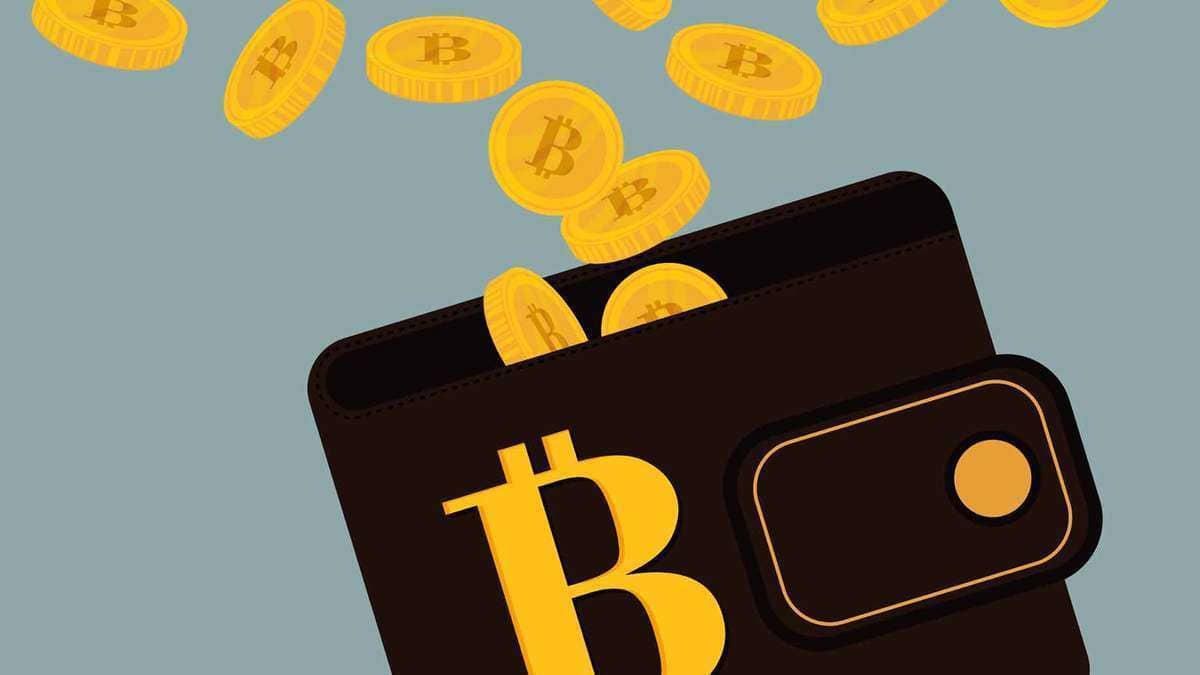Different Types of Crypto Wallets Explained 2023
Content
It says it supports about 30,000 digital assets, which is the most among hardware wallets reviewed by NerdWallet. When looking at the different types of crypto wallets, keep in mind you aren’t limited to one type. For instance, many of the major hardware wallets integrate with mobile and browser-based wallets. You can also have some funds in a hot wallet and maintain the rest offline in a hardware wallet.

In non-custodial wallets, you have complete control over your tokens and coins, as well as the private keys that prove those tokens and coins are yours. On the flipside, a custodial wallet has a wallet-hosting service that stores the keys to your crypto for you — which means that the host has the custody. Cryptocurrency is stored on the blockchain with a specific address. As mentioned above, the most popular hardware crypto wallets are produced by Ledger and Trezor. Though hardware wallets can be pricey, it’s a good idea to only buy a hardware wallet from a verified seller and avoid the second-hand market altogether.
Best cryptocurrency wallet for Bitcoin users
These wallets are quite easy to set up, and the funds are quickly accessible, making them convenient for traders and other frequent users. The wallet also includes an address, which is an alphanumeric identifier that is generated based on the public and private keys. Such an address is, in essence, a specific “location” on the blockchain to which coins can be sent to.
We believe everyone should be able to make financial decisions with confidence. Big picture thinker, observer, catalyst, husband, father, and based digital nomad. Mike is responsible for content, design, and research at Hobo with a Laptop.
How do I back up my crypto wallet?
With the Ledger Nano X, you can manage more than 5,500 tokens and coins with the Ledger Live app. The Coinbase dApp Wallet is an Ethereum-centric storage solution built into the Coinbase mobile app. The wallet makes trading tokens only found on DEXes easier for users, allowing them to interact with DEXs and various decentralized applications, known as dApps.
- Any of the wallet types described above have multisig versions.
- It is compatible with the Ledger live app and has an OLED Screen.
- The private key can be used on any wallet for accessing the cryptocurrency.
- MetaMask is also notable for its compatibility with other blockchain solutions.
- It helps to think of the Lightning Network as an expressway that sits on top of the regular Bitcoin blockchain.
This ease of access makes them ideal for those who trade more often and are considering spending bitcoins. So, the term ‘wallet’ is actually somewhat of a misnomer as crypto wallets don’t really store cryptocurrency in the same way physical wallets hold cash. Instead, they read the public ledger to show you the balances in your addresses and also hold the private keys that enable you to make transactions. Crypto wallet types would refer to the variants in the cold wallet category. You can find two common variants of cold wallets such as paper wallets and hardware wallets.
What crypto wallet should I use?
Software wallets are unique to each cryptocurrency while hardware wallets often support multiple currencies . As the name implies, a desktop wallet is a software you download and execute locally on your computer. what is a crypto wallet Unlike some web-based versions, desktop wallets give you full control over your keys and funds. When you generate a new desktop wallet, a file called “wallet.dat” will be stored locally on your computer.
Trust Wallet is cryptocurrency wallet software that allows you to trade various cryptocurrencies safely.
It also has multicoin support that enables you to purchase and swap thousands of coins and blockchain types, enabling purchase through your credit card.#Crypto #blockchain
— BZR (@bazaars_project) October 17, 2022
These evolved to include the keys and QR codes so wallets on mobile devices could scan them. However, paper wallets are easily damaged or lost, so many crypto owners do not use them anymore. Sending and receiving cryptocurrency is very easy using these applications. You can send or receive cryptocurrency from your wallet using various methods. Typically, you enter the recipient’s wallet address, choose an amount to send, sign the transaction using your private key, add an amount to pay the transaction fee, and send it.
Hardware Wallet
Once you have your seed phrase secure, you can start using your crypto wallet. Just like there are different types of wallets that you can use to store and carry cards and cash, there are different crypto wallet formats available for people to choose from. Another disadvantage to a paper wallet is the inability to easily send partial funds.
Unless the wallet owner falls for some sort of phishing attack, hackers have no way of obtaining the owner’s keys remotely. For something like a hardware wallet, a thief would first have to obtain the USB drive used to access your crypto and then somehow crack its password. Along with Ledger, Trezor is one of the two most well-known brands of hardware wallet in the world of crypto.
Hosted wallets
We gave preference to companies with the strongest security measures and reputations. Trezor is the best hardware wallet for security because it allows users to store their crypto assets offline, protecting them from malicious online attacks. This wallet can be connected to desktop computers and smartphones using USB-C or USB-A cables. A fiat wallet allows users to keep a virtual representation of their fiat money — USD, EUR, GBP, etc. — in a digital storage compartment. Fiat money is a currency issued by governments and is not backed by a physical commodity, such as silver or gold.
Central banks have been the traditional response to frequent fiscal problems. The money always belongs to its owner, but it is under the auspices of the bank when the money is not used. Like there are many ways to store your cash, there are many ways to stash your crypto.
What Is Bitcoin?
After a transaction is complete, a user can unplug their device, and not have to worry about it being constantly connected to the internet. This constant connection makes a wallet vulnerable to threat. However, only the owner of this mailbox has the key to open the it and receive the messages. NFTs, or non-fungible tokens, and many connect directly to exchanges where you can buy or sell crypto. You’ll need a non-custodial wallet unless you want someone else watching over your crypto.
Project – @xNFT_Backpack
– Investment: $20 M.
– Investors: FTX Ventures, Jump, Multicoin Capital, Anagram.
– Round: Strategic.
– Brief description: Cryptocurrency wallet NFT. Its feature is to run several types of applications in one place, which can simplify adaptation— ????????????????????????????????????????? (@MEGVLODON) October 1, 2022
Each brand has its own software that must be installed onto the hardware device before it can be used. Make sure to download the software from the company’s official website. Consumers should be aware that decentralized finance products and services carry significant risks and should be engaged prudently. The wallet also features a growing number of apps being released to diversify the wallet’s functionality, including apps for live charts, crypto staking and crypto deposits.
When it comes to crypto wallets, there is no perfect solution. Each type of wallet has different strengths, purposes, and trade-offs. So it’s really up to you to weigh up what works best for you and your specific needs.
Recommended Digital Nomad Tools We Use & Trust
Many crypto exchanges offer fiat wallets since it removes the wait time for depositing fiat to an exchange, facilitating the buying and selling of cryptocurrencies. A hot wallet has a connection to the internet or to a device that has a connection, and a cold wallet has no connection. Lastly, there are three subcategories of wallets—software, hardware, and paper. Each of these types is considered either a hot or cold wallet. Cryptocurrency wallets are software applications on computers or mobile devices such as phones or tablets.
The answer to the question “what is a crypto wallet” is that it’s like a crypto bank account that only you control. Software wallets are built for convenience while hardware wallets are built for security. To get started, you should research what wallet types work best for you. Research the options available to you, including cost and security. A crypto wallet app is a downloadable piece of software, available via the App Store or the Google Play store. The app stores the private keys that are needed to access your cryptocurrencies.
If you want to transact on a blockchain network like Bitcoin or Ethereum, you will first need a place to store your cryptocurrency. MetaMask has mobile and browser-based wallets, though it does not have a desktop app. You can, however, easily stake tokens using the apps that https://xcritical.com/ connect to MetaMask on the web. Just remember that if you’re not a big user of Ethereum and its related tokens, MetaMask might not be much help to you. The free application has some other strengths, such as mobile and browser-based connections to decentralized applications.
Cold wallets are usually gadgets that help you store sensitive crypto information on a device that isn’t routinely connected to the internet. Unless the wallet owner’s security is especially faulty, or they fall victim to something like phishing, hackers have no way of obtaining the owner’s cold wallet keys. Additionally, some cryptowallets will also allow you to convert “cryptocurrency A” into “cryptocurrency B”. So if you would like to take your Bitcoin and convert it to Ether, you can do this inside specific wallets that havee this feature. This is accomplished through an integration with a third party called ShapeShift. Remember, your coins are in the exchange’s custody if you choose to hold your crypto in their proprietary wallet.

















